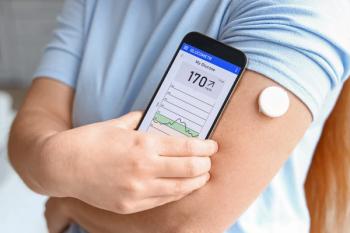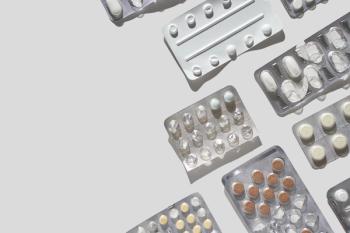
- Drug Topics November/December 2024
- Volume 168
- Issue 08
It’s Time to Staunch Our Self-Inflicted Wounds
Outside forces are at play, but pharmacists must turn inward to address some challenges in their profession.
We pharmacists, including me, are quick to blame outside influences for the craziness we see daily in our profession. So far this year, my columns have blamed trial lawyers, pharmacy benefit managers (PBMs), the big 3 pharmacy chains, and others in the periphery. But now, it is time to look in the mirror and see what we can do, as pharmacists, to take on the challenges in this profession.
We do many dumb things in the pharmacy, none dumber than accepting the “discount cards” offered by a plethora of companies. Why do pharmacists take the time to process these discount cards that pay another company to cut our prices and then charge us for the transaction? Imagine going to your dentist and needing a 2-surface permanent amalgam for $193. You tell them you have a discount card that brings the fee down to $122. Chances are, your dentist will tell you to hit the road, as it might be more financially advantageous for them to leave the chair empty than to lose money filling your tooth.
I know a pharmacist who takes discount cards from BlinkRx at his pharmacy. His patients use their credit card and their Blink app to purchase 56 buprenorphine 8-mg tablets, as their insurance does not cover it. The patient pays Blink around $110 for the medication; my pharmacist friend processes the discount card and is paid around $60. In addition to barely covering his costs, the pharmacist must also deal with the state health department, Drug Enforcement Administration (DEA) scrutiny, and other associated risks. BlinkRx makes their money just by providing an app that does not verify the pills, provide counseling, or assume any risk. That meets every definition of crazy I have. Why not just cash out the prescription for $110 and skip the discount process?
I know of a chain that enlists GoodRx and BlinkRx platforms to find patient deals. Yes—they actively search out these platforms to have their fees reduced. They then pay these platforms to lower their prices when, all along, they could match the price online and save their patients even more.
I know you are all squirming now that we must always transmit our “best prices” to the third parties that process our prescriptions. But how many of these platforms pay less than what the PBM pays? Again, fear trumps good old common sense.
Speaking of those third-party processors, they change their reimbursement method on a whim. One of the Medicaid providers in Pennsylvania changed from an average wholesale price-based reimbursement to a National Average Drug Acquisition Cost (NADAC) plus $6 model. Studies from the National Community Pharmacists Association have shown that it costs at least $12 to fill a prescription, considering vials, labels, utilities, computers, and staff salaries. Anything less than a $12 dispensing fee is underpayment. We are experiencing rising expenses in every area, from labor to utilities to supplies; no metric in NADAC or a flat $6 dispensing fee accounts for any of these macroeconomic issues.
NADAC supposedly represents the invoice price retail pharmacies pay for medications and is collected via surveys administered by the Centers for Medicare & Medicaid Services (CMS). In April 2024, we saw a massive decrease in the cost of buprenorphine and naloxone sublingual film 8 mg/2 mg. I spoke with representatives from Myers and Stauffer, which administers NADAC cost analyses for CMS, and they said a major chain started submitting data that drove down the NADAC cost for this product. We lost thousands of dollars in a month at the pharmacy where I work. The cost of our buprenorphine films never changed, and we buy from one of the big 3 wholesalers. (See the Table for these data.)
For the most common strength (8 mg/2 mg) buprenorphine and naloxone sublingual film, usually dosed twice daily, a pharmacy filling the prescription would be reimbursed $54.48 less in September 2024 than when filled in December 2023.
One might think about purchasing generic drugs from a wholesaler the way we buy groceries: “Just shop around.” But the truth is that most wholesalers are using the same pricing formulas. As with any controlled drugs, wholesalers set monthly quantity limits for opioids; even if we could find a cheaper generic at another warehouse—which is doubtful—we could not buy a sufficient quantity due to DEA-mandated quantity limits set by the wholesalers, based on previous purchases. If we ordered our buprenorphine films from another warehouse in the quantities we typically buy from our primary wholesaler, our order would be flagged as suspicious.
Yes, the FDA, the DEA, PBMs, trial lawyers, and drug companies have been causing headaches in our profession. But our profession needs to look at the senseless things we do regularly. We would still serve our patients well while pulling our money away from these electronic thieves.
Peter A. Kreckel, RPh, practices pharmacy part time in Lemont Furnace, Pennsylvania.
To read these stories and more,
Don’t get left behind: Sign up today for our
Articles in this issue
12 months ago
OTC Product Roundup: Sleep Aidsabout 1 year ago
A Look Back at the Affordable Care Actabout 1 year ago
Truth or Trend? Equipping Patients to Combat Misinformationabout 1 year ago
Q&A: Pharmacists Champion Nonopioid Pain Management StrategiesNewsletter
Pharmacy practice is always changing. Stay ahead of the curve with the Drug Topics newsletter and get the latest drug information, industry trends, and patient care tips.




































































































































